Pocket Explorers is a line of books by put out by Phidal Publishing. They designed for children and are educationally driven. Looking at their website, the themes are Reptiles, Wild Cats, Dinosaurs, Sharks, Polar Animals, Birds of Prey, Bears, and Crawlers, the last of which we will be looking at today. The products come in a box set that contains a small booklet with facts about the group of animals (the Crawlers booklet is 22 pages) as well as four figures. And since this is the Animal Toy Blog, naturally the purpose and focus of this review is the figures themselves. Now, since I started being more focused when it comes to arthropod figures, I must admit these are not figures I particularly needed nor would I have purchased as typical bag or bin sets. However, I have always had a niche interest in figures that come as publishing premiums with books and other publications (similar to my earlier blog review of the Junior Groovies Butterflies set by Innovative Kids). So today, let’s look at the Crawlers Pocket Explorers collection! A couple notes upfront. First of all, the figures are all made of a strong, hard PVC. Secondly, the designs don’t look familiar and are all stamped with ‘©Phidal’ so they may be unique sculpts for the set (although having only seen the arthropods in-hand, I can’t vouch for others in the series)!
For starters, the front of the box set:

The back of the box set:

Open the cover and the small booklet is at the bottom with the four figures in a compartment at the top:

Here is the booklet itself:
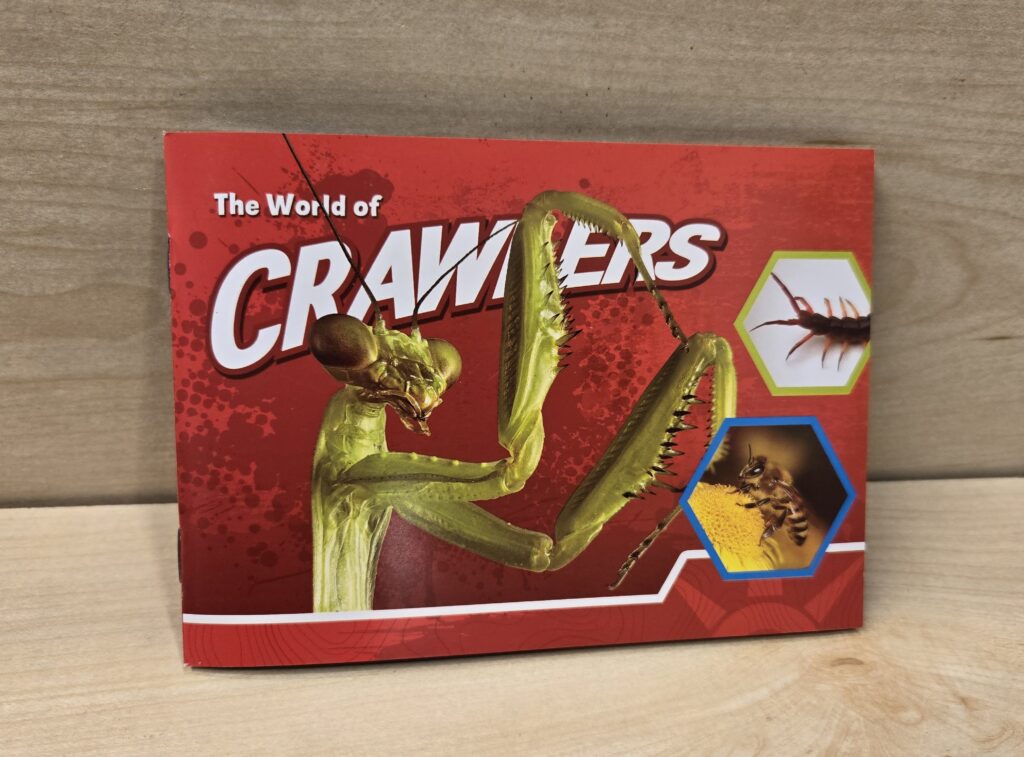
And here is a preview of each of the figures with their corresponding pages in the booklet (each will be covered individually in detail next):
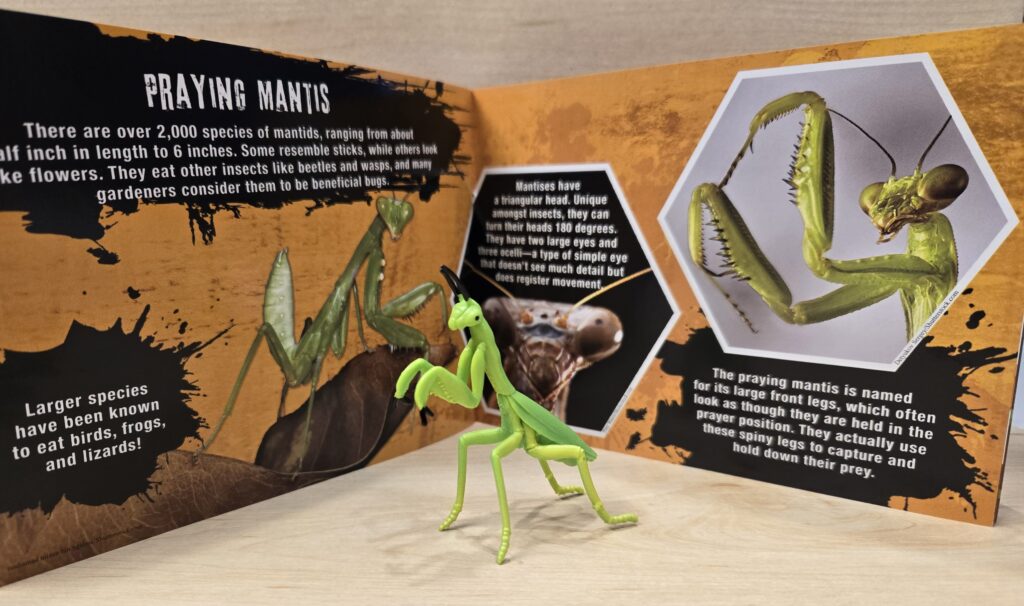
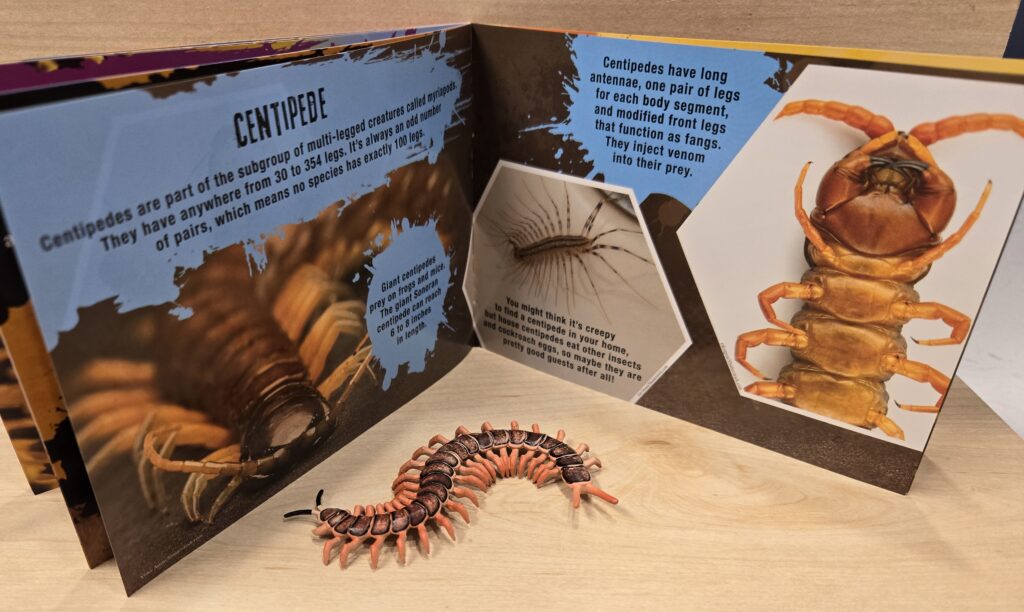
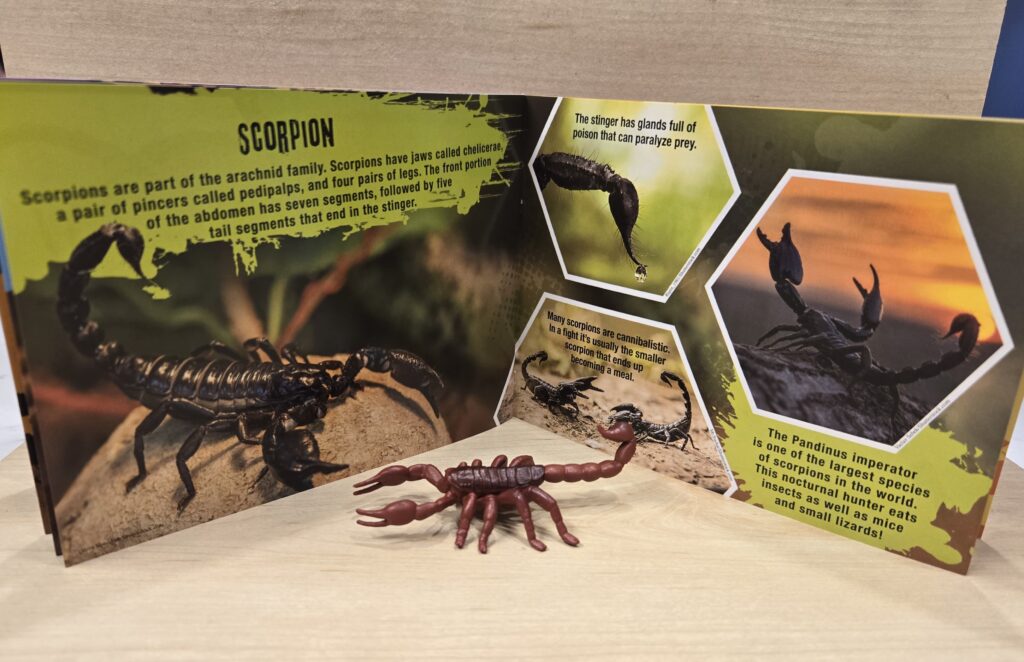

We will now look at each of the critters individually, starting with the praying mantis, Mantis religiosa. The figure stands roughly 6.2 cm tall, including the antennae. The body length is approximately 5.3 cm long, which puts in with in the 1:1 scale range for a smaller specimen or 1:1.4 for a maximum-sized specimen. Being made from a firm, sturdy PVC it stands well on its own. The body is a generic green common to bin-style mantids and grasshoppers, fading into a green-yellow for the legs. Black accents on the antennae, pupils, foretarsi, and foretibial spine. Not bad for what it is, and the upright posture is a welcome change from the ‘sprawling’ posture common to toys in bin sets.
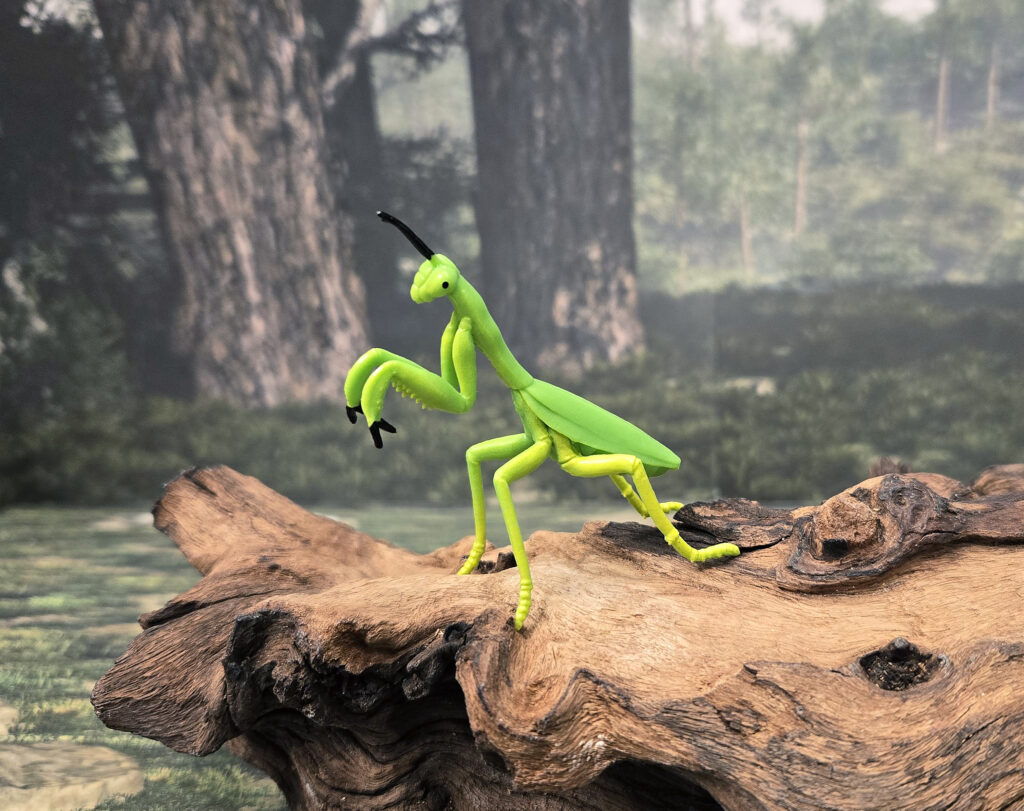

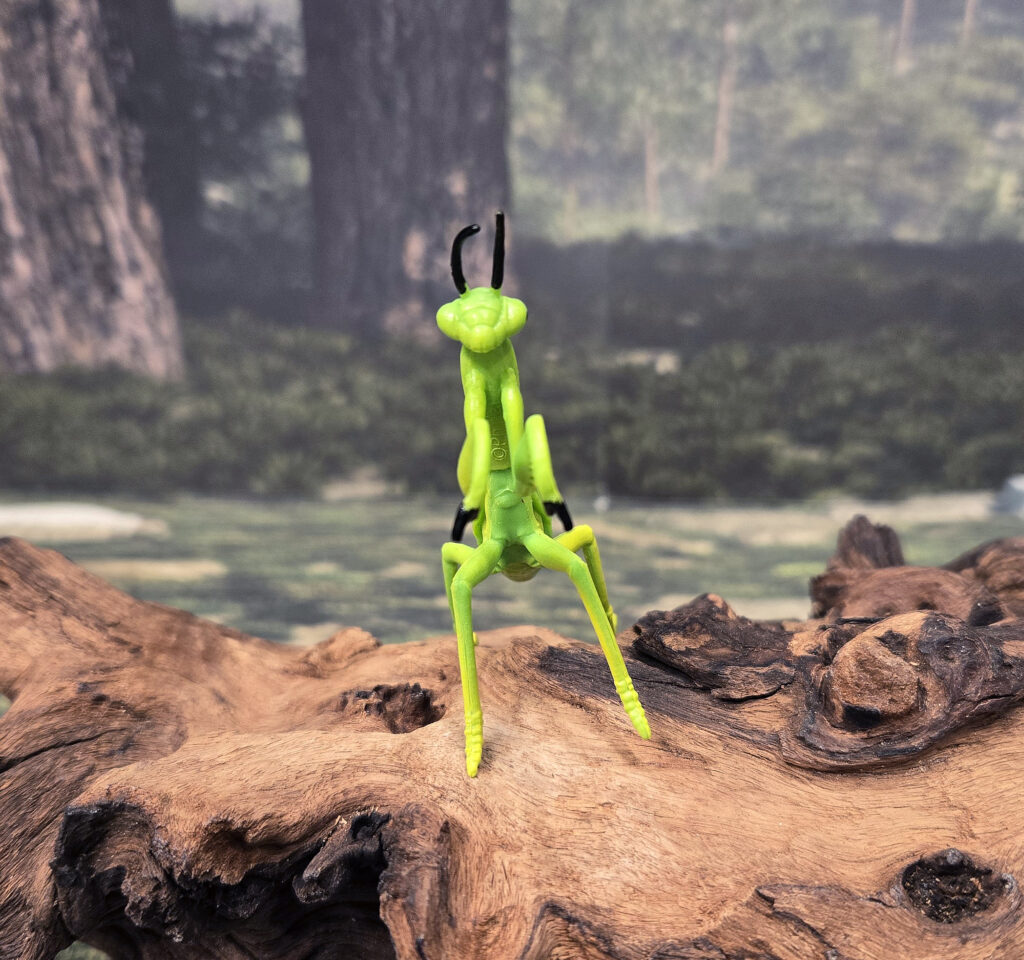
Next up is the centipede. It’s a bit generic but seems to clearly have been modeled after a giant centipede in the genus Scolopendra. I have seen a lot of centipedes in bin-style sets, but not with this exact sculpt. This is also by far the most ornately painted figure in the set. In fact, the centipede is the main reason I decided to pursue the set! Despite its rather intricate color pattern, I don’t think the figure can be attributed to a specific species. Looking at the sculpt on the underside, the anterior end appears to be the one with black appendages (antennae, making the posterior appendages the last pair of legs). Measured along the midline, the body length is approximately 10.5 cm, which could put in in 1:1 scale for some of the smaller species but probably closer to 1:1.5-1:2.8 for some of the larger species.
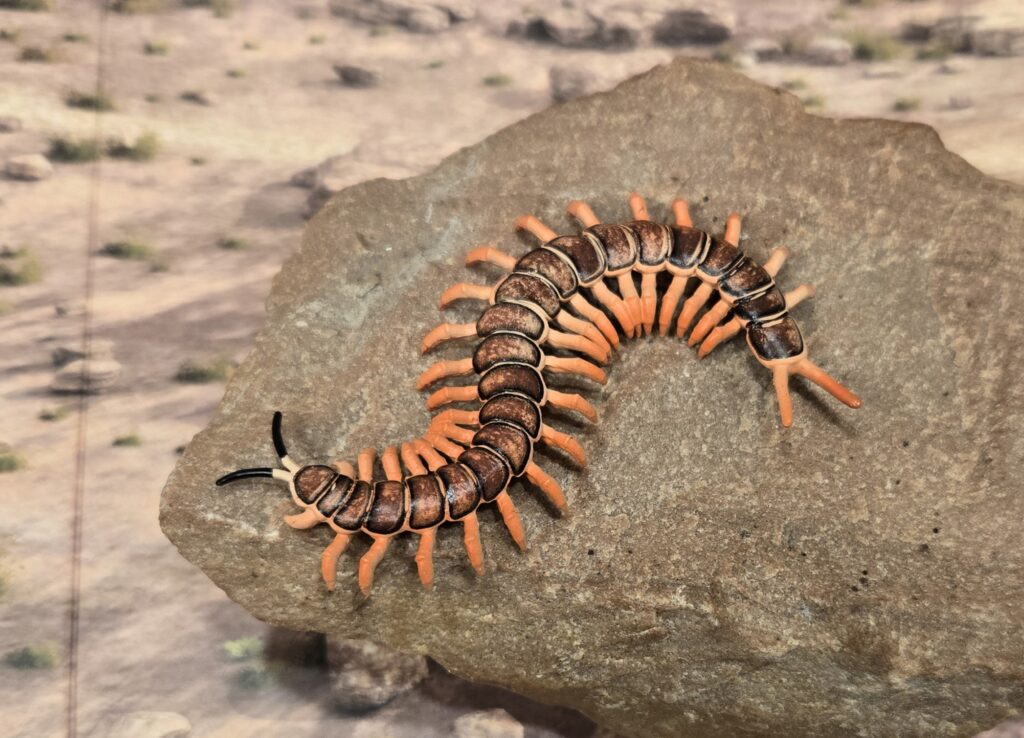

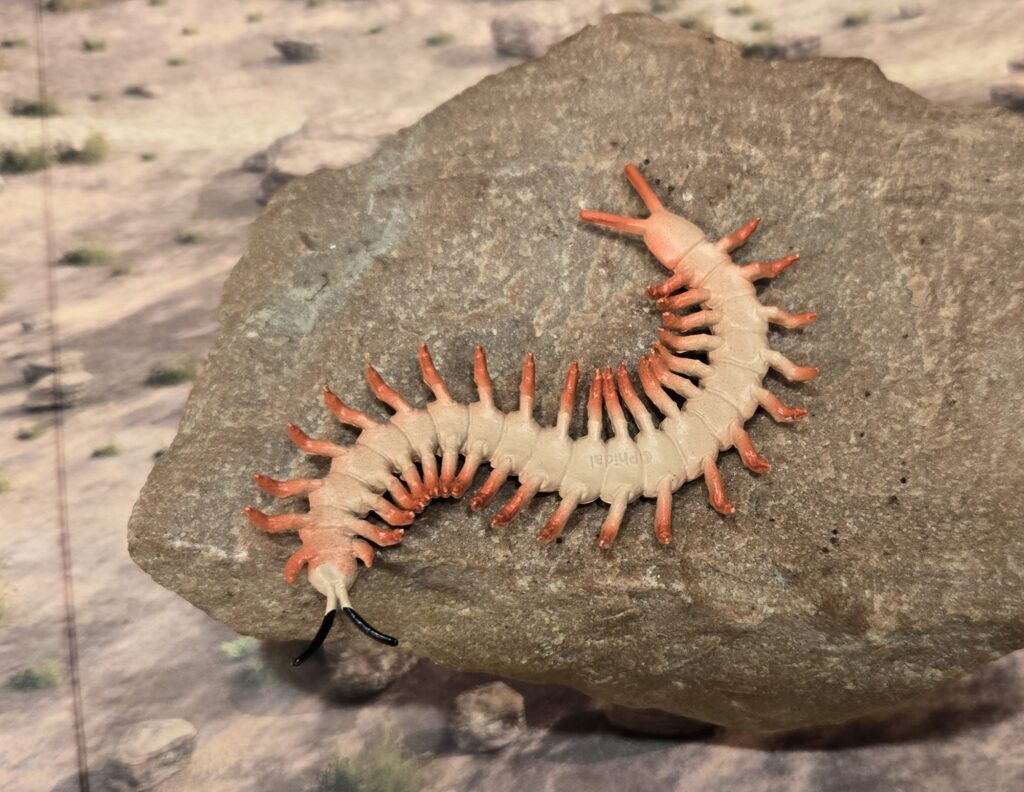
Next is the scorpion. The scorpion is also quite generic, but the booklet focuses on the emperor scorpion, Pandinus imperator, so I assume that’s what it was intended to represent (although the claws are a bit small and the color is off). The color is better for the emperor scorpion’s cousin, the Tanzanian red-clawed scorpion (Pandinoides cavimanus), but again the claws are too small. The Indian red scorpion (Hottentotta tamulus) is also reddish (but not this red) and has proportions more in line with this figure. Oh well, I will have to ponder a while what I want to database it as for my collection. For now though, it’s really just a generic scorpion. I don’t see any median eyes (there is a pair of indentations but not sure if those are intended to be eyes) but three lateral eyes are sculpted on each side of the carapace. The body length (minus claws and legs but including the stinger) comes to approximately 6.0 cm. The base color is a brick red with a slightly darker red on the entire dorsal portion and terminal two ventral segments of the mesosoma (the abdomen minus the ‘tail’).
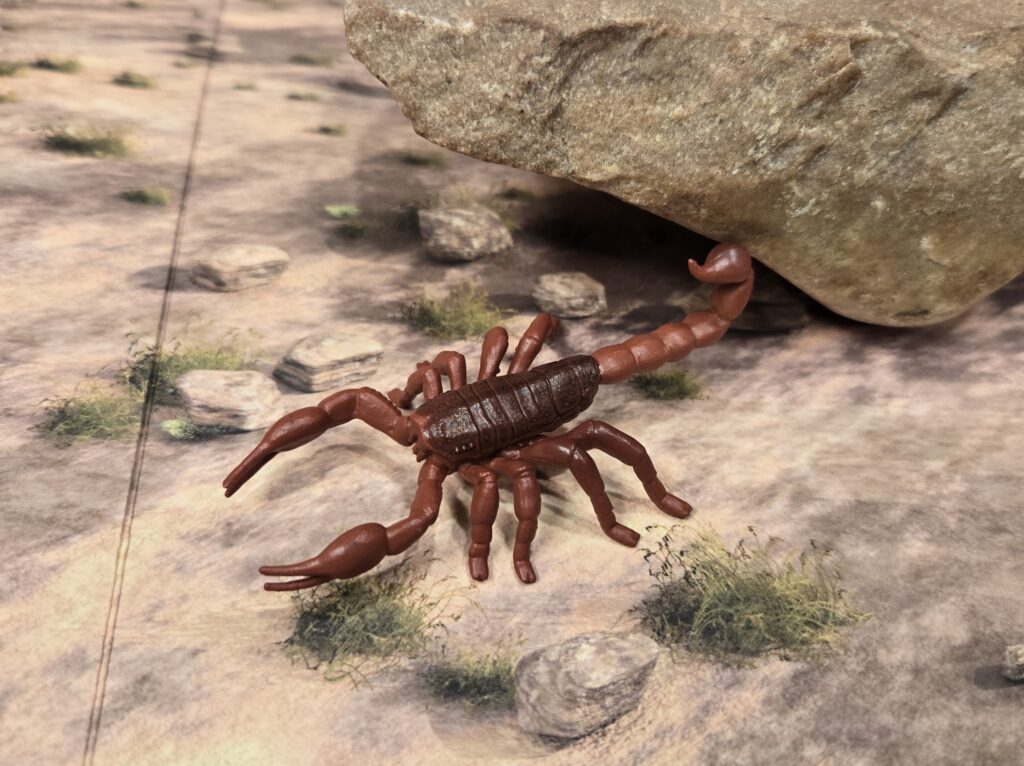
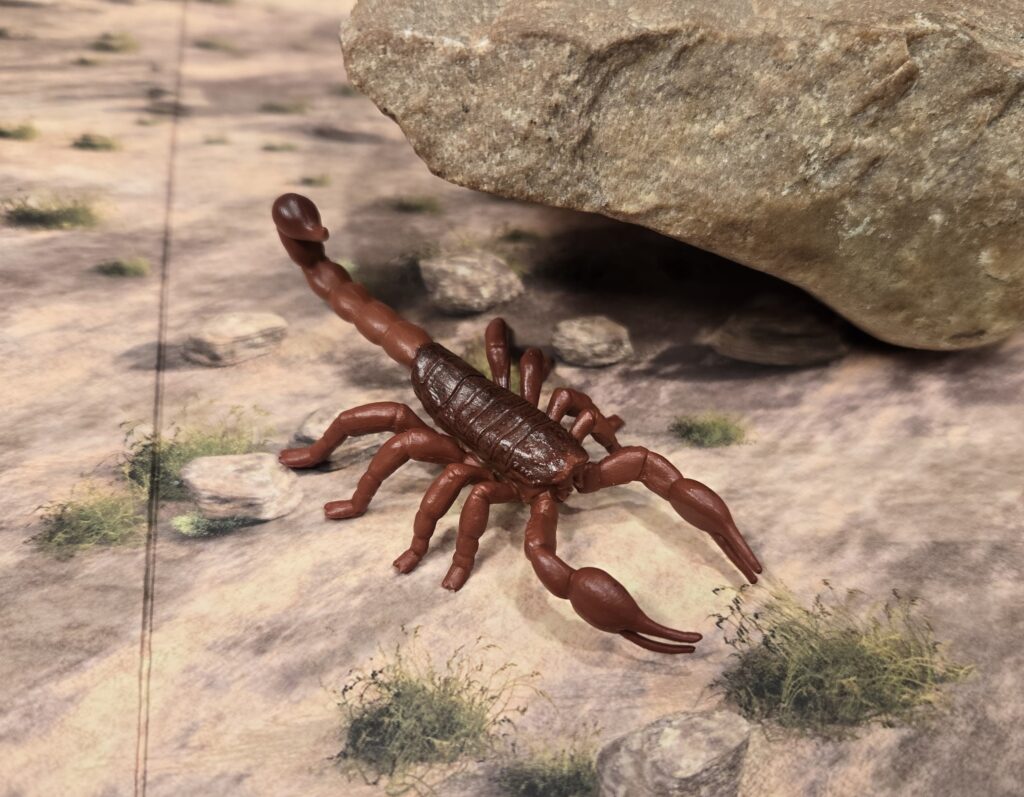

Lastly is the tarantula, which was clearly influenced by a red-knee in the genus Brachypelma. In the absence of evidence to the contrary, I will assume it’s the Mexican red-knee, B. smithi (by the way, if you go back to the pic earlier in the review with the booklet, one of the ‘tarantulas’ in the pics is the European wolf spider, Lycosa tarantula, which also goes by the common name ‘tarantula’). The legspan comes to about 6.7 cm. The body length (exclusive of appendages) comes to 3.5 cm for a scale of 1:1.5-1:1.7 for a female specimen of B. smithi. Like most spider figures, the eye arrangement is all wrong. The paint job is simple but shows contrasting bands characteristic of the red-knee complex in Brachypelma.
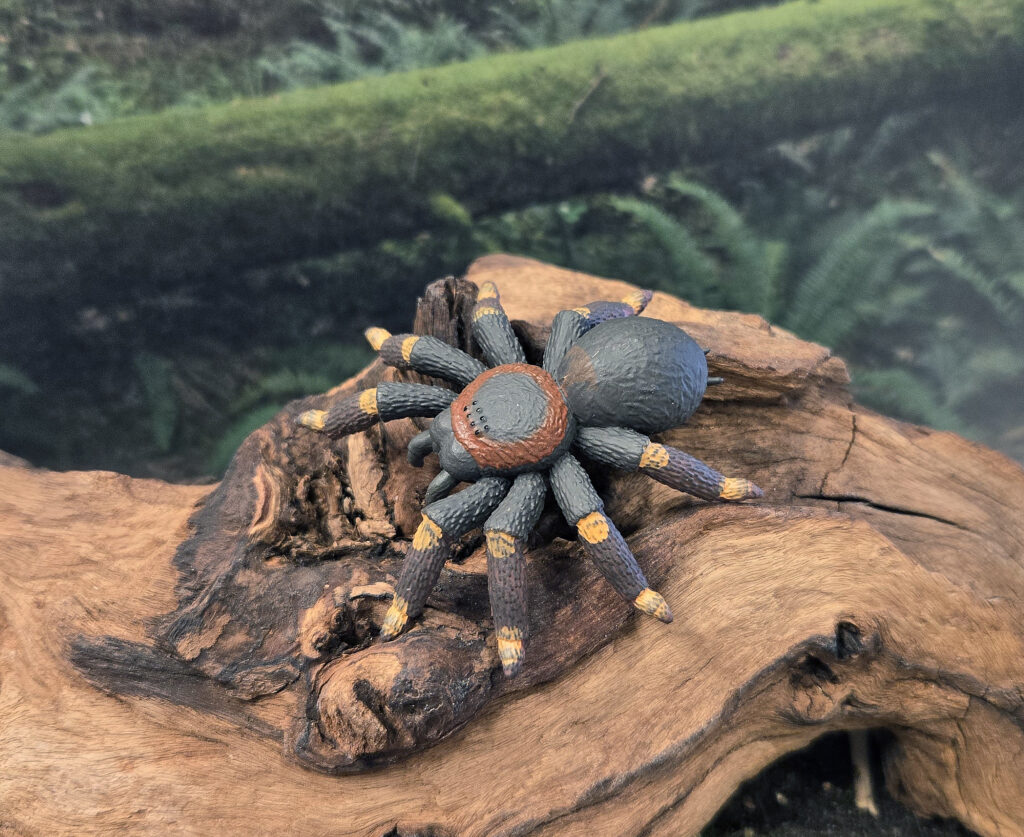
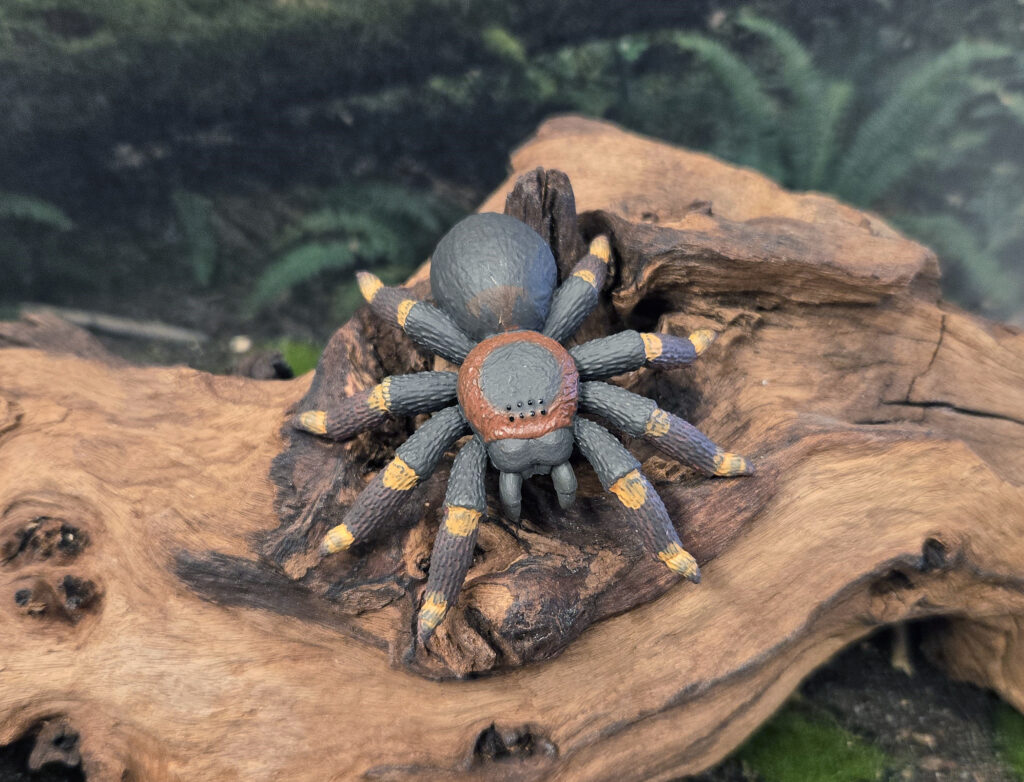
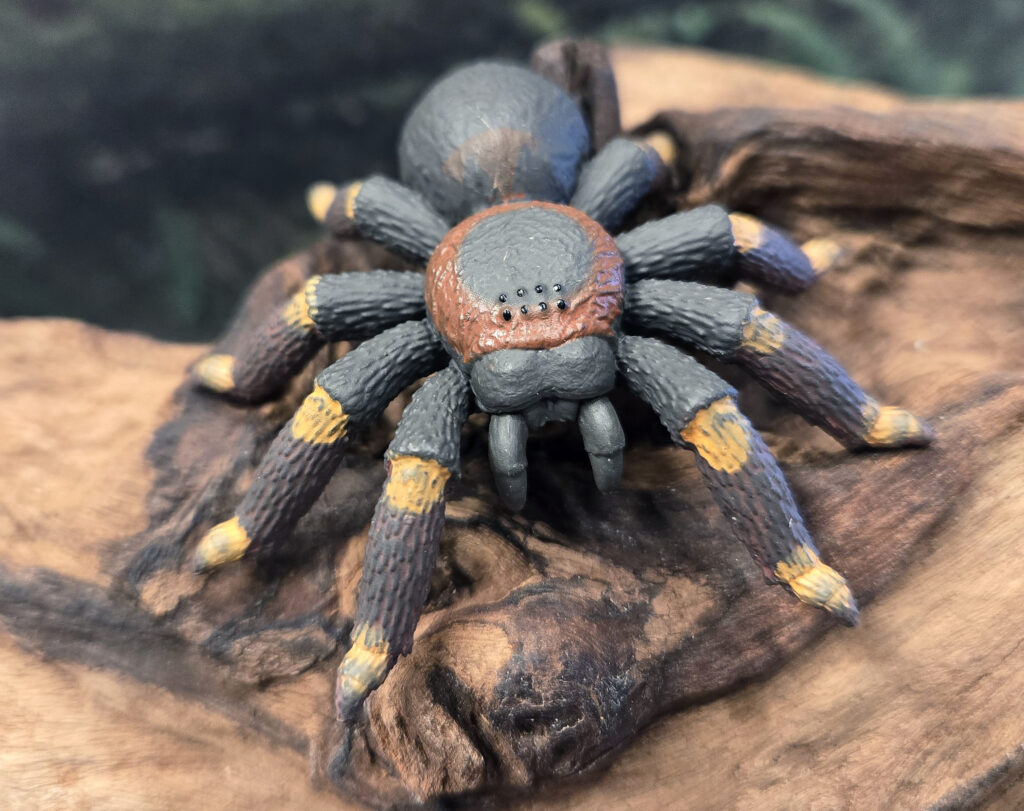
Overall this is a fun little set. It’s main audience is children, so it comes recommended to people with kids looking for fun interactive educational material about insects and arachnids. For the more ‘serious’ collector, there are better options readily available for all these critters.
Disclaimer: links to Ebay and Amazon on the AnimalToyBlog are affiliate links, so we make a small commission if you use them. Thanks for supporting us!



